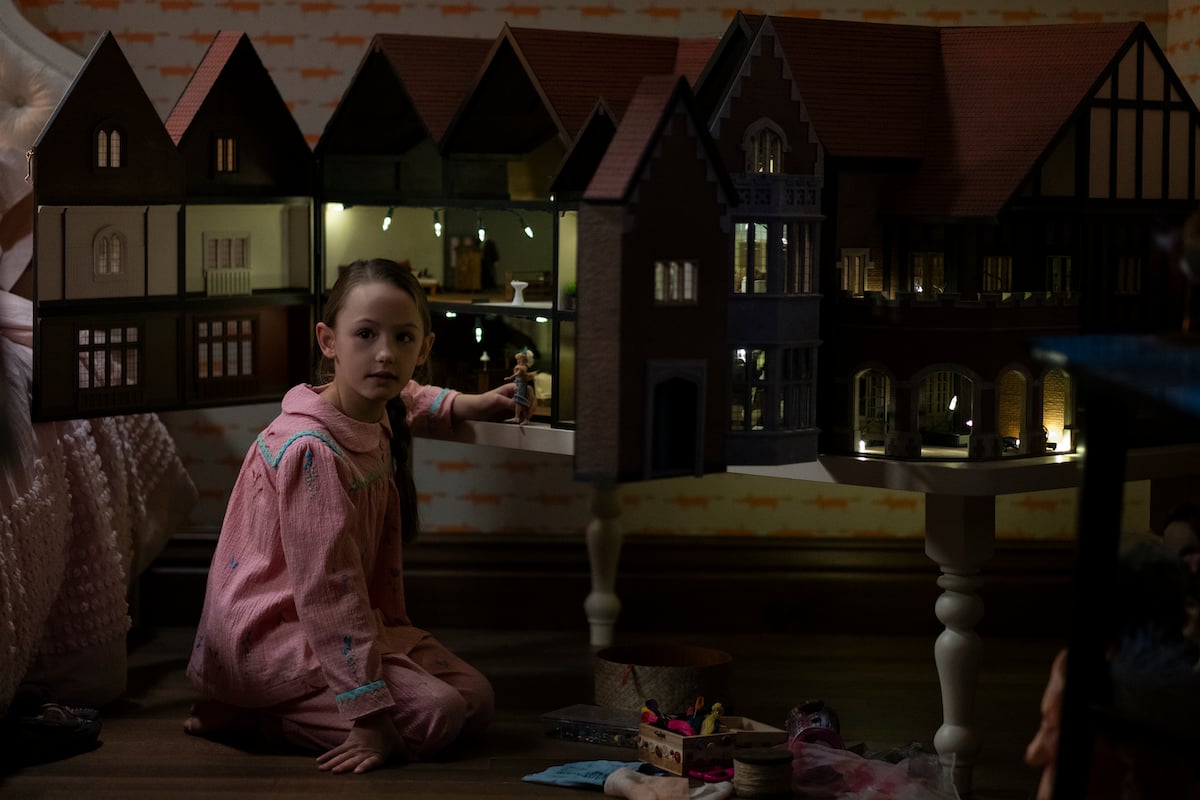‘The Haunting of Bly Manor’: How Flora Wingrave’s Dolls Symbolize This Toxic Relationship
The Haunting of Bly Manor features ghosts, but several other haunts can be found with a closer look. Find out the deeper meaning behind Flora Wingrave’s (Amelie Bea Smith) dolls in The Haunting of Bly Manor.

[SPOILERS AHEAD: Spoilers for The Haunting of Bly Manor discussed in this post.]
Like ‘The Haunting of Hill House,’ ‘The Haunting of Bly Manor’ is about haunted people and places
“At its foundation, The Haunting series is very much about haunted spaces and haunted people,” showrunner Mike Flanagan told Vanity Fair. In season 1 of the anthology series, fans watched the Crain family deal with their childhood trauma. Both the Crains and the home they once inhabited were haunted.
In Bly Manor, the idea of haunted people and places is once again present. But this time, they interact differently. “The way we make those things dance together is really going to be what’s uniform about Hill House and Bly,” Flanagan said.
Creepy dolls play a big role in ‘The Haunting of Bly Manor’
Flora Wingrave, the youngest child living at Bly Manor, has an eerie collection of handmade dolls. As we learn more about Flora, it becomes clear she has an other-worldly connection with these dolls. The dolls mean so much more to Flora than a children’s plaything.
Flora’s dolls are talismans. She uses them to protect the people she loves.
“Dolls, for children, are a way to play with representations of real people,” Flanagan explained. “I think for kids, it’s about control. Kids have such little agency. Dolls provide that.”
Flora tries to take control of her world by creating these talismans. But in doing so, the dolls also become representative of one of the most toxic relationships in The Haunting of Bly Manor.
Flora’s dolls symbolize the control and possession in Peter Quint and Rebecca Jessel’s relationship
Most of Flora’s dolls seem innocent enough, but two of them are actually symbolic of ownership.
“There’s a darker side to [Flora’s dolls],” Flanagan said. “Ownership, claiming someone, ceasing to look at them as a human, and instead, looking at them as an object, as a doll — we can draw lines to all sorts of toxic romantic relationships that way, and get into gender politics and the objectification of women in particular by this genre.”
Flanagan mentioned how Flora treats her dolls is indicative of how other characters, like Rebecca Jessel (Tahirah Sharif) and Peter Quint (Oliver Jackson-Cohen), interact with one another.
Before Miss Clayton came along, Rebecca cared for Flora and her brother. While fulfilling her duties as their governess, she fell in love with Peter Quint, Henry Wingrave’s (Henry Thomas) right-hand man. After what seemed like a Bonnie-and-Clyde romance, the two end up losing their lives to the manor.
As Flanagan pointed out, if you pay close enough attention, you’ll notice little difference in the way Flora behaves with her dolls and the way Peter treats Rebecca. “There are major themes throughout the whole season on the difference between love and ownership, of the nature and importance of consent,” Flanagan continued. “And possession, which is all over Henry James’s original material [The Turn of the Screw].”
Stream The Haunting of Bly Manor now.


